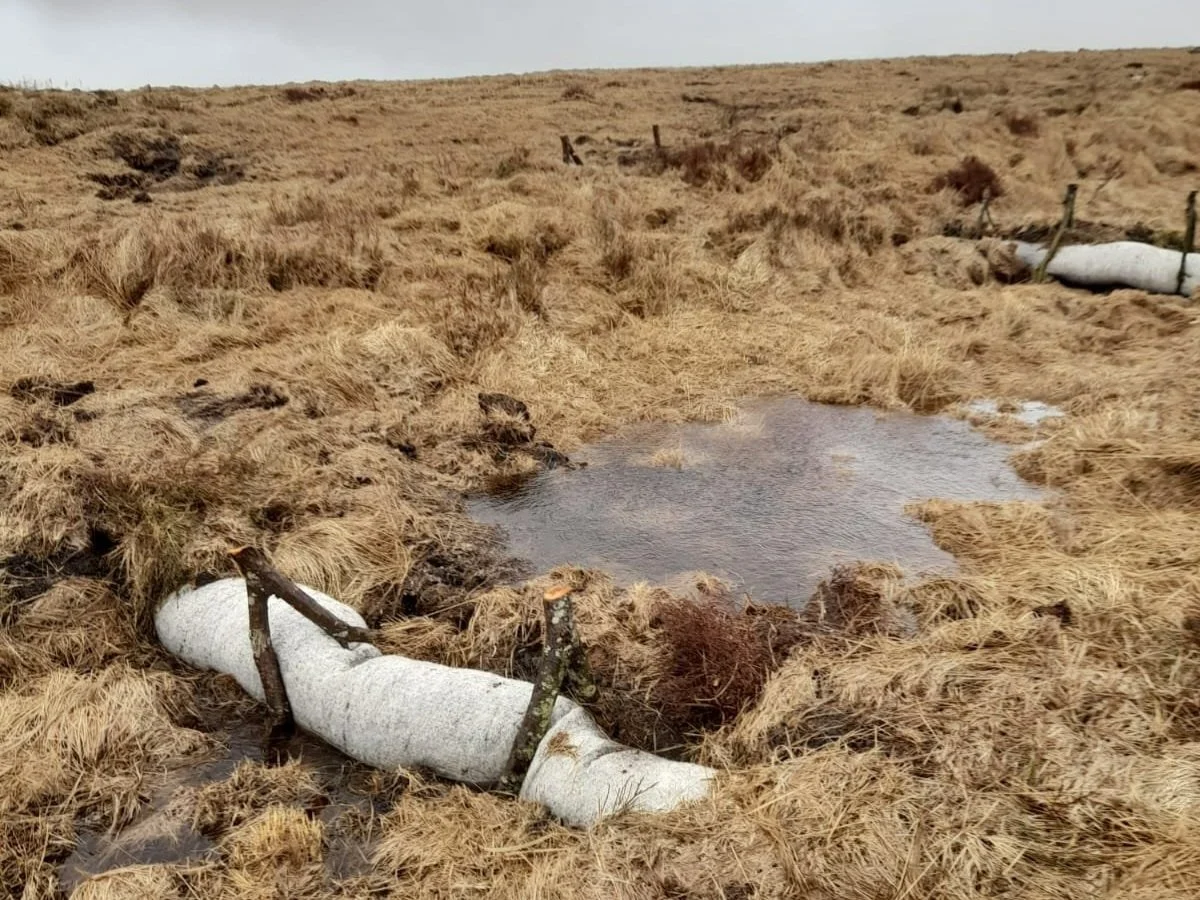Trialling Dartmoor wool in peatland restoration
Dartmoor is an industrial landscape, sculpted by human activity. Impacts of historic activities e.g. burning, peat cutting, military exercises and tin streaming are still causing damage to this day. Research by the University of Exeter estimates that less than 1% of Dartmoor’s blanket bog is still functionally intact.
A variety of innovative and tried-and-tested blocking methods are being used by the South West Peatland Partnership across the UK’s south west to raise the water table, in turn, hopefully restoring the hydrology of the peatland, diversifying wildlife habitat, encouraging bog plants to thrive, reduce carbon emissions from the peat and preserve archaeology from further erosion.
As the demand for wool continues to decline, many farmers on Dartmoor pay more for shearing their sheep than they receive in profit for the fleece. SWPP and Dartmoor Hill Farm Project met with Ruth Lindsey from Natural Dales Wool Products, who is working to develop varied uses for fleece to benefit local farmers.
The wool tubes soon after installation on NW Dartmoor, with shallow pools of water forming behind.
In total, around 100 long bags of felt were designed by Ruth, manufactured in Bradford, and then tightly packed on Dartmoor using local wool provided by a leer-holder (graziers who use the commons right to graze their sheep). A specially-constructed wooden tool was used to tightly pack the long felt tubes. Once formed, a trailer tracked up to Ockerton Court, a Duchy of Cornwall owned site, in March 2023 where the wool bunds would be installed and trialled.
Dartmoor wool ready to be packed into the long felt tubes for use in restoration
The woollen bunds ready for transport up to Ockerton Court, NW Dartmoor
Some of the woollen bunds being installed in the shallow peat as part of restoration works on this area
The wool was placed in some of the more degraded areas with very shallow or no peat underfoot with the hope that the bunds would slow the flow of water and create shallow pools that encourage bog plants to recolonise and expand across these areas. Three different methods of installing the sheep wool were used: some laid on the surface, some partially buried in peat, and others fully covered by peat and vegetation.
In time, by using dipwells, fixed point photography, transects and surveys, our monitoring team will be able to tell which method, if any, have statistically beneficial impacts on water quality, stability of the local water table, and whether sheep wool is a viable alternative to the use of imported coir often used in restoration elsewhere.




